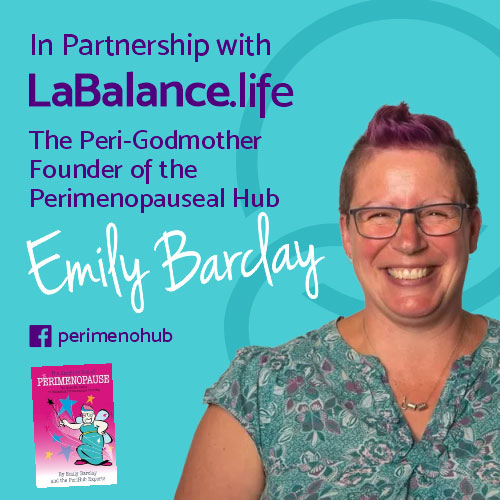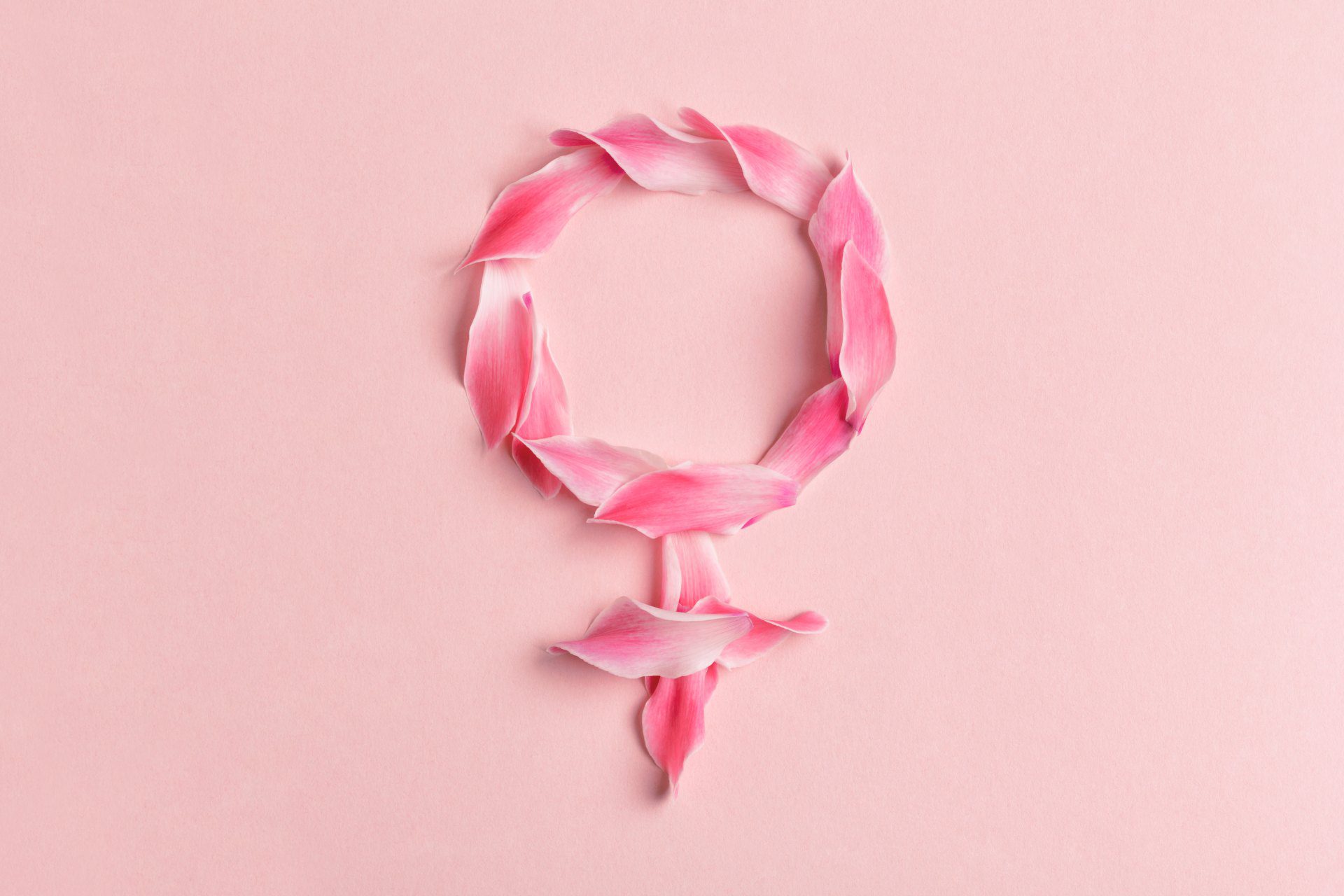Women go through a lot throughout their lives. Physically and mentally. Puberty hits us and our bodies are suddenly flooded with new reproductive hormones. Later down the line pregnancy changes the game for those who choose Motherhood. Finally we approach menopause, this and menopause symptoms can be the most difficult changes we encounter. A permanent end to the body and hormones we once knew, but also the start of a new journey.
What is Menopause?
A woman is considered to be menopausal when she hasn’t had a period for 12 consecutive months and no longer produces oestrogen or progesterone. These hormones typically begin to reduce around the mid-forties which is known as perimenopause. However, for some women this can happen earlier or much later. The average age of menopause itself is 51.
For the majority of women menopause occurs naturally. In some circumstances a hysterectomy or oophorectomy is necessary for medical reasons. A hysterectomy will cause menopause to take place within 5 years following the surgery. An oophorectomy (which involves removing the ovaries) will cause immediate menopause post-surgery. Either way, when menopause is reached the symptoms that can occur would be the same as a natural menopause.
Symptoms of Menopause
Women experience symptoms of perimenopause and menopause in varying degrees of severity. Most women suffer with multiple symptoms, some worse than others. Symptoms can begin years or months before you reach menopause. This period of time is known as perimenopause. This can be just as debilitating as menopause itself.
1 – Hot Flushes
A hot flush is the sudden feeling of heat all over the body, most notably in the upper portion. Hot flushes can last between 30 seconds to 10 minutes. They happen regardless of the temperature around you. You could be outside in the snow and a hot flush can still occur. Some women have one or two hot flushes a day, whilst others can experience up to 40 a day. It’s clear to see how this can completely ruin your day-to-day life.
2 – Night sweats
Night sweats are periods of heavy sweating that occur while you sleep. They can disrupt sleep, impact your sex life and increase your washload dramatically! Mostly, night sweats are extremely uncomfortable and usually occur hand-in-hand with daytime hot flushes.
3 – Vaginal Dryness
Vaginal dryness occurs due to the reduced levels of oestrogen and progesterone in the body. It can lead to itching, stinging, or burning around the vulva. Because of the lack of natural lubrication, it also makes sexual intercourse painful.
4 – Urinary Incontinence
Urinary incontinence (UI) is defined as the “loss of bladder control” or “involuntary urinary leakage.” Whilst all women can experience UI from time to time, it is common amongst those who are going through menopause. Aside from vaginal dryness, hormone changes are also to blame as they reduce muscle strength in the pelvic region.
5 – Heart Palpitations
Heart palpitations are heartbeats that are sudden and more noticeable than regular heartbeats. In menopausal women, they are the direct result of lower levels of estrogen, which lead to the over-stimulation of the heart. Some women also experience heart palpitations in connection with anxiety and panic attacks.
6 – Irregular or heavy periods
Changes in the menstrual cycle are also a common symptom of menopause. You may bleed heavier or lighter than usual. In some cases, your period may last a few days longer than you are used to. Spotting is also a common occurrence. While you’re still having periods you are considered perimenopausal. When your periods have completely stopped for 12 consecutive months you are considered to be in menopause.
7 – Loss of sex drive
A loss of libido is extremely common in women of menopausal age. It’s one of those symptoms which is less discussed due to embarrassment. However it is one of the more common ones. If you feel a lack of interest in being intimate with your sexual partner, try not worry too much.
Besides vaginal dryness, a loss of sex drive can also be attributed to delayed clitoral reaction time and slow or absent orgasmic response.
8 – Insomnia
If the hot flushes and night sweats are not keeping you awake at night, then insomnia probably is. One of the most common menopause symptoms, insomnia is when you have trouble falling asleep or sleeping through the night. At this point in your life, you may also wake earlier than expected and experience difficulty going back to sleep.
9 – Mood Swings
It is common to feel irritable and/or depressed during menopause. In fact, your mood can go up and down in an instant and without warning. At times, you feel like crying for no reason at all. These mood swings are often caused by fluctuating hormone levels affecting your brain. This in turn could lead to anxiety or depression.
10 – Breast soreness
Breast soreness associated with menopause usually feels different from the soreness you may have felt at other points in your life. In the majority of cases, one or both of your breasts will feel sore or you could feel a burning sensation. Similar to many menopause symptoms, breast soreness and tenderness is caused by fluctuating levels of oestrogen and progesterone.
11 – Anxiety
Some women become anxious and can feel very low during menopause. As with most menopausal symptoms, this can be attributed to hormonal changes. Moreover, significant life changes occurring at this time, such as children leaving the home or elderly parents being unwell, could also contribute to the development of anxiety. If you cannot find an obvious cause for your anxiety and nothing circumstantial is directly causing it, then it’s most likely menopause/perimenopause related anxiety.
12 – Fatigue
A persistent feeling of mental and physical exhaustion is another common symptom of menopause. Also known as menopausal fatigue, this is due to a change in the levels of oestrogen and progesterone, as well as thyroid and adrenal hormones. All of these hormones are involved in regulating cellular energy. When compromised, they can make you feel constantly exhausted.
A feeling of weakness can also be due to other physical menopausal symptoms, particularly night sweats and insomnia. If you can’t sleep well at night, you’ll often feel tired and sleepy during the day.
13 – Loss of concentration and memory lapses
Research showed that many middle-aged women experience loss of focus and other cognitive issues when going through perimenopause or menopause. According to experts, this “menopause brain fog” may relate to sleep issues and other vascular symptoms that could arise due to menopause. Having difficulties concentrating and/or remembering things are common at this time of life. However, if they begin to affect your daily life, you should consider seeing your doctor.
14 – Urinary tract or bladder infection
Some women found that they become more susceptible to urinary tract infections or UTIs when they go through menopause. According to doctors, reduced oestrogen levels can also affect the urinary system. Similar to the vaginal wall, the urethra (the tube that drains the bladder) changes when your body starts producing less oestrogen. Because of this, women are more likely to develop UTIs and bladder infection during menopause.
15 – Sudden weight gain
Hormonal changes that herald the arrival of menopause make it more likely for you to gain weight, especially around the abdomen. Age, lifestyle, and genetic factors also contribute to sudden weight gain. For instance, we usually lose muscle mass as we get older, resulting in a slower metabolism. Because of this, it becomes difficult for middle-aged women to stay in shape.
16 – Digestive problems
Menopause could also give rise to several digestive problems ranging from bloating and constipation to gas build-up and abdominal pain. These problems usually occur due to a spike in adrenalin, which is triggered by low levels of oestrogen in the body. When there are high levels of adrenaline in your body, it switches your digestive function off. As a result, you may experience a variety of digestive issues.
17 – Painful and sore muscles, tendons, and joints
Because female hormone levels fluctuate during menopause, women may experience various aches and pains, most notably in the muscles and joints. Reduced oestrogen and progesterone levels affect the levels of the stress hormone cortisol in the body. In turn, this hormonal imbalance causes the muscles to tighten and become fatigued. The reduced oestrogen also promotes inflammation, resulting in discomfort and menopause-related arthritis.
18 – Itchy and crawly skin
Oestrogen helps keep the skin healthy. It helps moisturise the skin by stimulating the body to produce natural oils and collagen. As the level of oestrogen decreases during menopause, so do the levels of natural oils and collagen. As a result, the skin becomes drier and thinner. Because of this, your skin may feel at times itchy or as if something is crawling on it.
19 – Hair loss
As if having dry skin is not enough, hair loss is another problem that plagues many women going through menopause. Studies suggest that menopause-related hair loss is due to an increase in the production of androgens, which is triggered by reduced oestrogen and progesterone levels. Androgens cause hair follicles to shrink, making it easy for the hair on your head to fall out. In some women, these hormones also cause them to grow hair on their face, particularly the chin.
What is LadyCare Plus?
Menopause is a natural stage of a woman’s life and, unfortunately, there’s no way of avoiding it. The good news is that there is a simple and effective way of alleviating its symptoms. With LadyCare Plus, you could say goodbye to up to 24 different symptoms of menopause and perimenopause. LadyCare could give you your life back and allow you to fully enjoy what the years ahead have to offer.
How the LadyCare Plus Works and How to Use It
Proudly made by UK-based LadyCare Menopause Ltd, a leader in natural health products, LadyCare Plus is a small, yet extremely powerful and natural device designed to help relieve menopause symptoms. Manufactured to the highest standards, it features the company’s patented and unique SM field technology.
Studies have shown that LadyCare Plus helped relieve symptoms of menopause for 71% of women. It works by rebalancing part of the Autonomic Nervous System (ANS), the part of the brain responsible for many physiological actions. It is the ANS which becomes off-set as a result of reduced hormones. LadyCare works to rebalance the ANS with the Parasympathetic division (PNS).
Using LadyCare Plus is simple. The device attaches firmly to your underwear and is worn about four inches below your navel. To attach, remove the pear shaped part of the device and place it against your body on the inside of your underwear. Finally, place the small round button on the outside of your underwear to keep it in place.
You can use LadyCare Plus whilst exercising. However, we do recommend that you remove it when swimming so it won’t get lost.
How LadyCare Helps with Menopause Symptoms
Here’s how LadyCare Plus can relieve your menopause symptoms:
1 – Breast soreness
If you are perimenopausal and suffering from breast soreness or tenderness, you may place LadyCare Plus in your bra for a minimum of 20 minutes. This will help reduce soreness and ease your discomfort.
2 – Irregular or heavy bleeding
An imbalance in the ANS is the usual cause of irregular periods as you transition to menopause. LadyCare Plus helps by restoring equilibrium to the ANS and in turn minimises irregular or heavy bleeding.
3 – Bloating and sudden weight gain
If you feel bloated or are having trouble with sudden weight gain, don’t worry. LadyCare Plus could help. In our trial of 508 women, 99 of them lost an average of 14 pounds over three months. Some of our customers also report losing weight or finding relief from bloating after using the device for just a few weeks. A healthy diet and exercise routine is also advised as with any weight loss plan.
4 – Loss of libido
Is your significant other feeling a little neglected because you’re never in the mood? LadyCare Plus has been proven to help menopausal women in this regard by helping to eliminate symptoms that contribute to the loss of libido such as vaginal dryness and night sweats. Studies have revealed that many of our customers have regained their sex life after using the product.
5 – Hot flushes and night sweats
A recent survey revealed that 71% of 35 women from the British Association of Women Police reported having fewer hot flushes after using LadyCare Plus. Because the device helps balance the ANS, hot flushes and night sweats can be reduced.
6 – Other perimenopausal and menopausal symptoms
LadyCare Plus also addresses several perimenopausal and menopausal symptoms such as mood swings, irritability, loss of energy and concentration, memory lapses, and insomnia. It is also great for preventing hair loss and eliminating dry itchy skin as it helps slow down collagen loss. This is one of the reasons many women continue to wear LadyCare Plus even beyond menopause.
Other Benefits of Using LadyCare Plus
Beyond helping you manage menopausal symptoms, here are other reasons why you should try LadyCare Plus:
1 – Easy to use
With LadyCare Plus, you simply clip the device on each day and night. You don’t have to take pills or have injections that may cause side effects. Simply attach the device to your underwear and you’re good to go about your day.
2 – Safe for cancer patients
LadyCare Plus is safe for cancer patients because it doesn’t increase oestrogen levels. It has been found to reduce hot flushes, which is a potential side effect of Tamoxifen and other oestrogen-modifying drugs prescribed for breast cancer. Moreover, there have been no reports of negative side-effects amongst thousands of LadyCare Plus users with breast, cervical, or uterine cancer.
3 – Doesn’t interfere with pacemakers or defibrillators
Since we began manufacturing our product 14 years ago, we have yet to receive complaints or reports of any adverse effects from our customers with pacemakers or defibrillators. Also, unlike pacemakers, LadyCare Plus transmits a static negative pole field. As such, it doesn’t react against microwaves, mobile devices, and security scanners.
4 – Safe for women taking HRT or those with a Mirena coil
LadyCare Plus is also safe for women taking hormone therapy, as well as those with a Mirena coil. Indeed, many of our customers were so happy with our product they decided to have their coil removed or stop taking their HRT. This is a personal choice.
5 – See positive results in just one month
Whilst its effectiveness may vary from one woman to the next, quick results can be expected if LadyCare Plus is used continuously. Some of our customers report finding relief from symptoms of menopause in as little as one month. However the device must be worn for a full 3 month of consecutive use before assessing results.
Final Thoughts
As menopause is an important life milestone, it should be a cause for celebration, particularly as you no longer have to deal with your monthly periods. However, because of the symptoms that accompany it, many women dread going through this particular stage of their life.
Fortunately, LadyCare Plus offers a safe and effective way to manage a wide range of symptoms and find relief from menopause. With this all-natural device, you can finally reclaim your life and fully enjoy your days with your loved ones.




